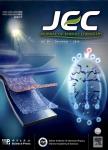Flower-like ZnO modified with BiOI nanoparticles as adsorption/catalytic bifunctional hosts for lithium–sulfur batteries
Flower-like ZnO modified with BiOI nanoparticles as adsorption/catalytic bifunctional hosts for lithium–sulfur batteries作者机构:National Base for International Science&Technology CooperationNational Local Joint Engineering Laboratory for Key Materials of New Energy Storage BatteryHunan Province Key Laboratory of Electrochemical Energy Storage&ConversionSchool of ChemistryXiangtan UniversityXiangtan 411105HunanChina Department of ChemistryThe Chinese University of Hong KongShatinN.T.Hong KongChina Key laboratory of Materials Processing and Mold of Ministry of EducationZhengzhou UniversityZhengzhou 450001HenanChina
出 版 物:《Journal of Energy Chemistry》 (能源化学(英文版))
年 卷 期:2020年第29卷第12期
页 面:21-29页
核心收录:
学科分类:0808[工学-电气工程] 07[理学] 070205[理学-凝聚态物理] 08[工学] 080501[工学-材料物理与化学] 0805[工学-材料科学与工程(可授工学、理学学位)] 0702[理学-物理学]
基 金:supported financially by the National Key Research and Development Program of China (2018YFB0104200) the Key Project of Strategic New Industry of Hunan Province (No. 2019GK2032)
主 题:Flower-like ZnO BiOI nanoparticles Mutual catalytic conversion Shuttle effect Lithium–sulfur batteries
摘 要:Due to the high specific capacity and energy density, lithium–sulfur battery is regarded as a potential energy storage conversion system. However, the serious shuttle effect and the sluggish electrochemical reaction kinetics impede the practical use of lithium–sulfur battery. In the interests of breaking through the above knotty problems, herein we propose to use the polar flower-like Zn O modified by Bi OI nanoparticles as bifunctional host with catalytic and adsorption ability for polysulfides in lithium–sulfur *** can be found that this adsorption/catalytic host integrates the functions of adsorption and mutual catalytic conversion of polysulfides, in which the polar flower-like Zn O can effectively capture the polysulfides through strong polar-polar interaction, simultaneously the BiOI nanoparticles can accelerate the mutual conversion of polysulfides to Li2 S through reducing the activation energy and conversion energy barrier required for the electrochemical reaction. As a result, under a sulfur loading of 2.5 mg cm^(-2), the lithium–sulfur battery with Zn O/Bi OI/CNT/S as cathode reveals a considerable initial specific capacity of1267 mAh g^(-1) at a current density of 0.1 C. Even the current density increased to 1 C, the capacity can reach as 873.4 mAh g^(-1), together with a good capacity retention of 67.1% after 400 cycles. Therefore,after systematically study the positive effects of the flower-like ZnO modified by catalytic BiOI nanoparticles on the adsorption and catalytic conversion of polysulfides, this work provides a new idea for the development and application of high-performance lithium–sulfur batteries.




